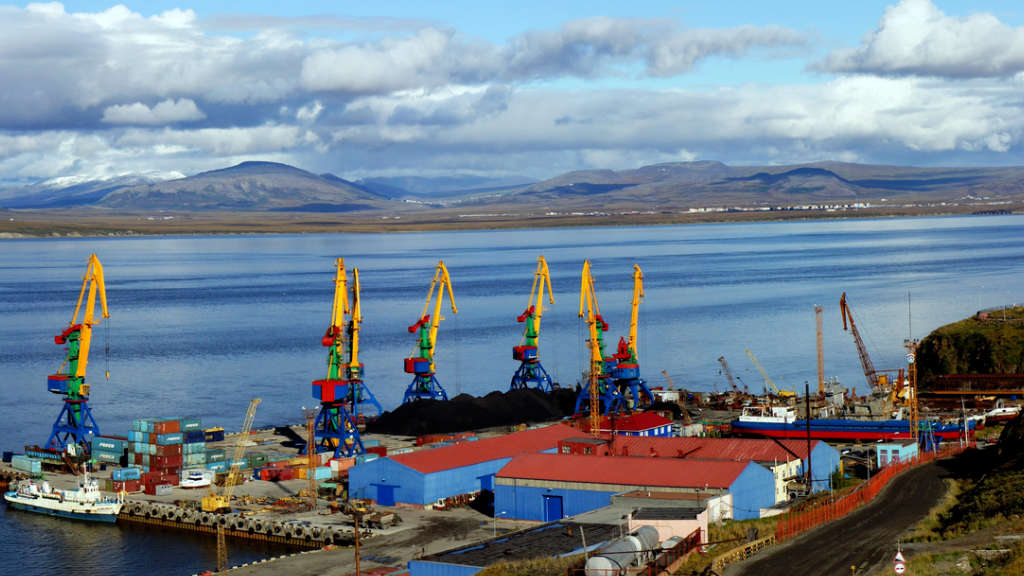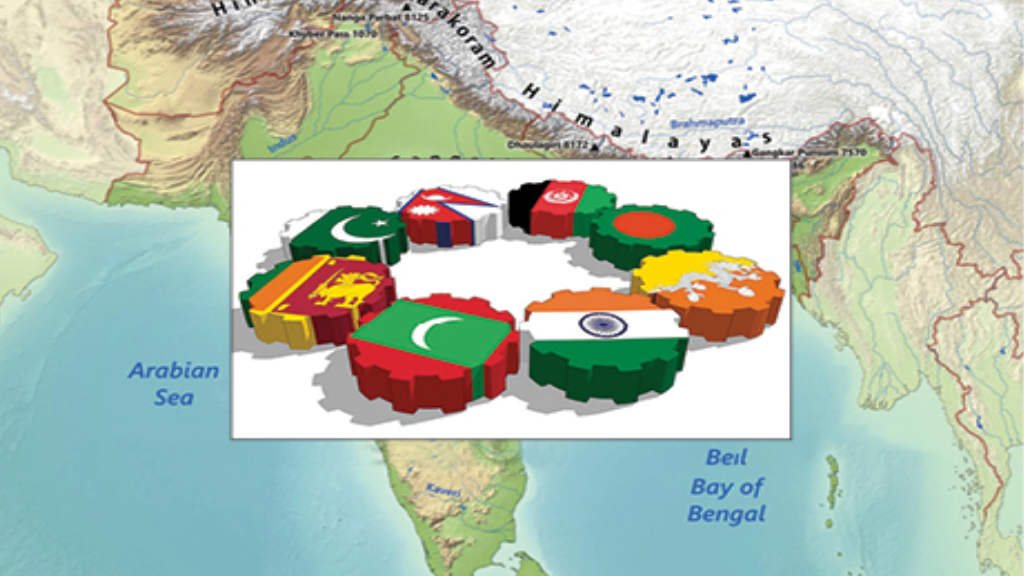Russia ranks third in its readiness to implement Autonomous Transport (AT) systems among the BRICS, CIS and partner countries, second only to China and the United Arab Emirates and ahead of countries such as Saudi Arabia, Brazil and Turkiye, according to the latest Kept (ex-KPMG) ratings.
For the assessment, Kept’s analysts compared countries with each other in terms of government policy in transport digitalisation, production and technology, infrastructure and consumers. A feature of the development of unmanned vehicles in Russia is the testing of technologies and solutions within the framework of experimental legal regimes. This makes it possible to start mass operation of drones without waiting for the development and adoption of a large number of regulations and at the same time verifying business models.
The rating – which was also reviewed by Forbes – included 16 countries amongst the BRICS, CIS members and its trading partners: Turkiye, Saudi Arabia, and the United Arab Emirates. The comparison choice was made due to the growing volume of cooperation between Russia, the CIS and the BRICS, as well as the economic interaction and trade of the BRICS countries among themselves and with the countries of Central Asia.
Kept stated “It was interesting to assess how the emergence of advanced technologies in some countries affects the willingness of partners to create conditions for the use of these technologies at home.”
The evaluation criteria also included the availability of a national development program, legislation governing the development and use of autonomous transport, household incomes, the size of the passenger transport market, government financing, the availability of testing areas and permits for access to roads, and so on. Russia’s overall score was 58.2 points, third after China (62.7) and the UAE (58.5).
Assessing the macro environment (legal regulation, infrastructure and technology development, and household incomes), Kept puts Russia in 3rd place, which it shares with the UAE. China is ahead, where not only the AP development program is being implemented, which has been tested for several years, but also one of the highest levels of digital infrastructure readiness in the world, and Saudi Arabia, where the Vision2030 strategic program is being implemented. In the CIS, the development of national policies in the field of unmanned vehicles is still at an early stage, and some countries are taking the first steps towards the development of AT. This includes India and Turkiye, both of whom have some catch-up to do.
AT Regulatory Development
Russia is now a leader in the readiness of the macro environment for the implementation of AT, according to Kept. Russia’s legal environment is aimed at regulating vehicle testing in especially created zones, as well as allocating test lanes on public roads. In addition, the government is developing laws that will introduce rules for the use of AT as part of its gradual implementation.
Kept stated that “Russia’s leading position is supported by the high level of development of information and telecommunication technologies (ICT) and road infrastructure, which allows the use of AT on the main transport corridors and in megacities. The assessment of the sufficiency of household incomes allows us to expect that AT will be in demand as a competitive offer becomes available.”
AT In Russia’s National Development Infrastructure Plans
Russia’s national transport strategy to 2030 includes the development of unmanned cargo transport infrastructure, (including the digital-only lanes of the M11 Moscow-St.Petersburg highway), digital transformation of all modes of transport (introduction of integrated transport services, electronic platforms for ordering cargo, logistics and e-commerce services), increased investments in the road industry in the period 2025-2030, as well as in urban transport until 2035.
Unmanned trucks between Moscow and St. Petersburg along the M11 highway using Kamaz vehicles are already being tested and should be a regular feature along the route from 2025. In time, most of Russia’s major highways will possess digital-only lanes. The Russian Ministry of Transport has estimated the additional costs of equipping roads so that unmanned vehicles can use them at ₽4-6 million (US$38,000 – 57,000) per kilometre. This is less than 0.5% higher than the standard cost of building a kilometre of Russia’s standard federal highway.
AT Cost Comparisons
The cost of building a kilometre of highway in the European Union averages between €6-12 million per kilometre, and in the United States, between US$2-10 million per kilometre – a major issue with the costs of upgrading EU and US logistics.
AT Network Readiness
Another key indicator is the readiness of technology and society. For this purpose, the Network Readiness Index (NRI) was used. It is calculated by the independent research institute Portulans Institute together with the World Alliance of Information Technologies and Services. The index is calculated based on an assessment of 62 indicators divided into four groups: technology, public administration, people, and influence. The value of this index – the average value of ratings by group – for Russia is 57, this is again the 3rd position, second only to China and the UAE (67 and 62, respectively).
The results of comparing the average per capita residual income with the monthly lease payment for AT indicate that in the vast majority of countries, unmanned vehicles are not yet available for purchase by the average buyer. This is primarily due to the high cost of the technology and its focus on a narrow premium segment of consumers at the current stage of development.
Kept also assessed the development of the industry environment in different countries in order to form an idea of the readiness of the production base for mass production of AT. In turn, mass production can become possible when the level of development of autonomous driving technologies makes it possible to make AT competitive compared to traditional cars, the study says. This includes conditions for manufacturers, market potential, and industry relationships. According to Kept’s estimates, according to the criteria for the development of the industry environment, Russia is second only to China, and ahead of the UAE, India, and Brazil.
China has the world’s largest automotive industry with an active production of AT and a passenger car market exceeding US$800 billion, with steady sales growth. In Russia, support for technological advances covers structural difficulties, with the Russian passenger vehicle market amounted to US$101 billion in value in 2023. Russia’s auto sales growth during 2024 has been estimated as being as high as 25%.
Russian Government Subsidies
The Russian government is also actively subsidising the testing of highly automated vehicles to ₽500,000 per project, and has also initiated a project to launch unmanned cargo transportation, under the “Unmanned Logistics Corridors” project, the implementation of which requires State funding of about ₽5.2 billion (US$50 million).
Eight companies are engaged in the pilot production of self-driving cars and buses in Russia. The most technologically advanced have already gained access to certain public roads. Supporting industries within the country provide self-driving cars with electrical wiring and develop their own lidars, and the charging infrastructure is also at a fairly high level.
However, there are bottlenecks. Kept stated that “The full-fledged development of the industry is hampered by a shortage of some components and a shortage of qualified specialists. A rather outdated fleet with an average age of 15 years of a passenger car also indicates a slow pace of fleet renewal, which hinders the introduction of new technologies into mass use.”
While studying the level of technology development for AT, Kept’s analysts took into account how far Russia has progressed in the transformation of theoretical developments into tangible products. The production of critical components in the country (sensors, processors, and control systems) indicates the availability of infrastructure, skilled labour, and government and private sector support for innovation, according to the report.
Product Development
At the current stage of AT production development, China is once again way out in front of the competition, with 57 businesses operating in this sector. China has the highest level of development of automation technologies among the countries studied: mass production of cars with a high level of automation is underway, and the testing of commercial operation is underway on real road networks. In India, there are 37 of these companies, including startups, but these have only reached the prototype stage at this present time.
Russia has eight participants in this market, who develop software, create hardware and software complexes and, unlike India, test AT on roads in special zones. Among the leaders are Yandex SDG, Avtotech (Navio), Sber and Cognitive Technologies, and KAMAZ. The Starline NGO, the Technical Vision Alliance, the Moscow Automobile and Road Construction State Technical University (MADI), and the GAZ Group, who together with the Nizhny Novgorod Technical University are also engaged in industry developments.
AT Security & Safety
It is assumed that autonomous control will eliminate the human factor, which is the root cause of the vast majority of road traffic accidents. However, to achieve such a result, it is necessary to ensure a high level of AT security. The optimal testing distance has been measured at being 18 billion km. When this value is reached, the safety assessment of AT will be as statistically significant in comparison with the safety assessment of conventional cars.
Russia is among the leaders in autonomous transport testing among the countries featured in the study. The total mileage of Yandex SDG, KAMAZ and Avtotech (Navio) vehicles can be estimated at about 40 million km. In Russia, they are testing the use of AT technologies on cars and trucks, as well as on public transport.
In 2018, a special legal regime was established for the experimental operation of unmanned vehicles in Moscow and Tatarstan. Currently, an experimental legal regime (EPR) for the operation of unmanned passenger cars and trucks has been launched in 38 regions, including the Kalibr Technopark in Moscow, while Yandex SDG is also testing robotaxis for daily trips in the residential areas of Moscow and Innopolis in Tatarstan. The trucks are being tested on the M-4, M-7 and M-11 highways in different climatic zones: in the Krasnodar Territory, Crimea, Khanty-Mansiysk and Yamalo-Nenets Autonomous Districts. The results of AT testing in EPR will be used for further general regulation of the autonomous transport industry in Russia.
AT Development In Russia: Industry Predictions
According to Ksenia Konikova, Director of Business Development at Navio, the most realistic scenario for the coming years is the complete launch of autonomous vehicles for transporting passengers and cargo on established routes, where the infrastructure is already ready for this. To implement automated control systems, roads must also become smart, meeting certain standards and be equipped with additional equipment (cameras, sensors and other systems) so that the vehicle continuously exchanges information with the surrounding infrastructure.
Konikova said “Work in this area is also actively underway in Russia. Digital road doubles are appearing and there is a roadmap for scaling them.”
The mass introduction of self-driving cars on public roads will occur in the next few years, according to Arslan Urtashev, the technical director of autonomous transport at Yandex, who says “The key factors are increased road safety, an acute shortage of drivers, and significant commercial benefits for all market participants, both for developers of autonomous technologies and for their customers who provide the ultimate passenger or cargo transportation service. As for public transport, it has already been implemented in some places. For example, there are countries where the subway runs without a driver. However, the massive transition of all types of public transport to autonomous technologies will happen later than in commercial transport.”
Konikova agrees, saying that “Autonomous driving technology will not replace a person at the moment and does not pretend to completely eliminate a human driver. But it is already necessary to meet the growing demand for transportation from large cities and companies from retail, e-commerce and FMCG.”
Further Reading
New Russian Rail Digital Container Terminal To China Being Constructed





